Controlling Quince Rust – How To Get Rid Of Quince Tree Rust
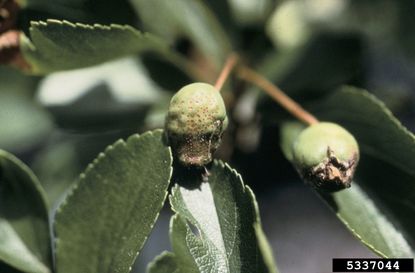

Quince tree leaf rust sounds like a disease that would create problems for quince trees in your garden. In fact, it is better known as a disease that attacks apples, pears, and even hawthorn trees. If you want to learn more about how to get rid of quince tree rust, read on.
What is Quince Tree Leaf Rust?
Quince rust is caused by the fungus Gymnosporangium clavipes. Although it is called quince tree leaf rust, it doesn’t do much damage to the leaves of fruit trees. It attacks the fruit. So, if you are worried about this disease, don’t look for the rust on quince leaves. Most of the symptoms are on the fruit. You may also see some on the twigs. The quince rust fungus requires both a juniper/cedar and pomaceous host. Pomaceous hosts include apple, crabapple, or hawthorn trees, and these are the plants that will suffer most. When you set out to start controlling quince rust, understand the symptoms to look for. While you may see a few traces of rust on quince leaves and apple leaves, the fungus always causes fruit to be stunted or killed off.
Quince Rust Treatment
The question of how to get rid of quince tree rust begins with eliminating parts of the trees that are infected. Look for misshapen fruit with lesions, both on the tree and on the ground beneath it. Gather and remove these for disposal. You may see little cup-like structures producing orange spores on the fruits. These also appear on the juniper/cedar hosts. You will also find twigs and petioles that have cankers and are dead or distorted. As part of quince rust treatment, you need to get rid of these too. Cut off all infected wood and burn or remove it. There are other steps you can take towards controlling quince rust. One step is to avoid planting the two hosts together. That is, don’t plant apple or quince trees near juniper/cedar hosts. You can use protective fungicide sprays as part of quince rust treatment as well. Apply it to the pomaceous hosts in the spring. The fungicide Chlorothalonil works toward controlling quince rust and is an effective part of quince rust treatment as well.
Gardening tips, videos, info and more delivered right to your inbox!
Sign up for the Gardening Know How newsletter today and receive a free download of our most popular eBook "How to Grow Delicious Tomatoes."

Teo Spengler has been gardening for 30 years. She is a docent at the San Francisco Botanical Garden. Her passion is trees, 250 of which she has planted on her land in France.
-
 Clever Vertical Vegetable Garden Ideas For Small Spaces – 7 Ways To Save Space
Clever Vertical Vegetable Garden Ideas For Small Spaces – 7 Ways To Save SpaceShort on garden space? Learn some vegetable garden ideas for small spaces that are fun and easy.
By Mary Ellen Ellis
-
 26 Different Types Of Orchids – With Pictures & Information
26 Different Types Of Orchids – With Pictures & InformationDiscover stunning orchid types to grow in your home and garden – from easy beginner varieties to rare and exotic species that are the preserve of experts.
By Melanie Griffiths
-
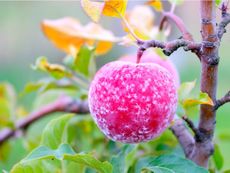 How To Protect Fruit Trees From Frost And Freeze
How To Protect Fruit Trees From Frost And FreezeChoosing fruit trees appropriate for your growing zone is best, but you still may need to protect them from extreme cold. Read how.
By Bonnie L. Grant
-
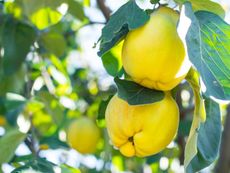 Best Plants For Late Summer and Fall Fruit Harvest
Best Plants For Late Summer and Fall Fruit HarvestEven if you don’t have the optimal conditions for more common fruit trees, there are other end of summer fruits to enjoy.
By Teo Spengler
-
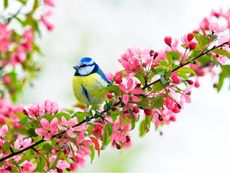 Best Native Fruit Trees To Support Wildlife
Best Native Fruit Trees To Support WildlifeIf you want trees that will attract and feed wildlife, learn the best kinds of edible fruit and nut trees to plant for inviting specific creatures.
By Teo Spengler
-
 Orange Fruit Varieties: Growing Fruits That Are Orange
Orange Fruit Varieties: Growing Fruits That Are OrangeOrange colored fruit isn’t limited to the citrus orange. There are plenty of other orange colored fruit varieties, each packing a healthful punch. Read on for more.
By Amy Grant
-
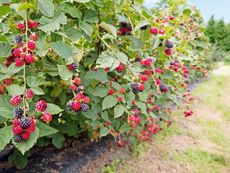 Everbearing Plants: Learn About Everbearing Varieties Of Fruit
Everbearing Plants: Learn About Everbearing Varieties Of FruitWhat does everbearing mean? And more importantly, how do everbearing varieties differ from non-everbearing types? Read on for more.
By Laura Miller
-
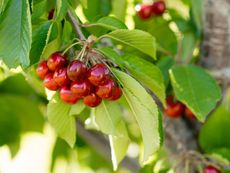 Plant A Red Fruit Garden: Growing Fruits With Red Flesh
Plant A Red Fruit Garden: Growing Fruits With Red FleshPlanting a red fruit garden may seem a bit whimsical. That is, until you realize the health benefits of consuming fruits with red flesh.
By Laura Miller
-
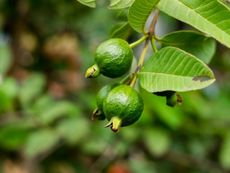 Heat Tolerant Fruits - Growing Fruit In Hot Weather
Heat Tolerant Fruits - Growing Fruit In Hot WeatherSome fruit grows in extreme heat naturally. But there are also specially cultivated, heat-tolerant varieties. For more information on heat tolerant fruits, read on.
By Teo Spengler
-
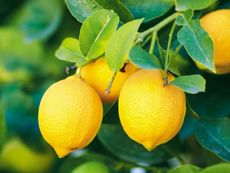 Yellow Fruit Varieties - Growing Fruit That Is Yellow
Yellow Fruit Varieties - Growing Fruit That Is YellowWhat fruit is yellow? There's more than the bananas at the supermarket. Try growing yellow fruit for a consistent supply of sunny food.
By Bonnie L. Grant